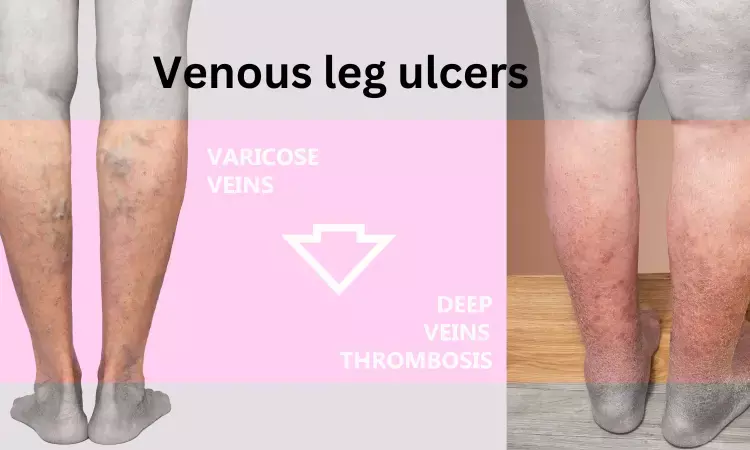- Home
- Medical news & Guidelines
- Anesthesiology
- Cardiology and CTVS
- Critical Care
- Dentistry
- Dermatology
- Diabetes and Endocrinology
- ENT
- Gastroenterology
- Medicine
- Nephrology
- Neurology
- Obstretics-Gynaecology
- Oncology
- Ophthalmology
- Orthopaedics
- Pediatrics-Neonatology
- Psychiatry
- Pulmonology
- Radiology
- Surgery
- Urology
- Laboratory Medicine
- Diet
- Nursing
- Paramedical
- Physiotherapy
- Health news
- Fact Check
- Bone Health Fact Check
- Brain Health Fact Check
- Cancer Related Fact Check
- Child Care Fact Check
- Dental and oral health fact check
- Diabetes and metabolic health fact check
- Diet and Nutrition Fact Check
- Eye and ENT Care Fact Check
- Fitness fact check
- Gut health fact check
- Heart health fact check
- Kidney health fact check
- Medical education fact check
- Men's health fact check
- Respiratory fact check
- Skin and hair care fact check
- Vaccine and Immunization fact check
- Women's health fact check
- AYUSH
- State News
- Andaman and Nicobar Islands
- Andhra Pradesh
- Arunachal Pradesh
- Assam
- Bihar
- Chandigarh
- Chattisgarh
- Dadra and Nagar Haveli
- Daman and Diu
- Delhi
- Goa
- Gujarat
- Haryana
- Himachal Pradesh
- Jammu & Kashmir
- Jharkhand
- Karnataka
- Kerala
- Ladakh
- Lakshadweep
- Madhya Pradesh
- Maharashtra
- Manipur
- Meghalaya
- Mizoram
- Nagaland
- Odisha
- Puducherry
- Punjab
- Rajasthan
- Sikkim
- Tamil Nadu
- Telangana
- Tripura
- Uttar Pradesh
- Uttrakhand
- West Bengal
- Medical Education
- Industry
Combined endovenous ablation and compression may speed up venous leg ulcers healing

Globally Venous leg ulcers (VLUs) affects 3% of the population, is a serious manifestation of chronic venous disease, the disease has shown a worldwide growing incidence. The efficacy of the newer, minimally-invasive endovenous techniques has proven to be effective and can also be used in the management of VLU.
Researchers in a recent study in Coharane reviews determined the effects of superficial endovenous ablation on the healing and recurrence of venous leg ulcers and the quality of life of people with venous ulcer disease. The study found that endovenous ablation of superficial venous incompetence in combination with compression improves leg ulcer healing when compared with compression alone.
Researchers reviewed randomised controlled trials (RCTs) comparing endovenous ablative techniques with compression versus compression therapy alone for the treatment of VLU were eligible for inclusion. Studies needed to have assessed at least one of the following primary review outcomes related to objective measures of ulcer healing such as: proportion of ulcers healed at a given time point; time to complete healing; change in ulcer size; proportion of ulcers recurring over a given time period or at a specific point; or ulcer‐free days. Secondary outcomes of interest were patient‐reported quality of life, economic data and adverse events.
The key findings of the study are
• From 2 studies, researchers found 466 participants showed high‐certainty evidence that combined endovenous ablation and compression compared with compression therapy alone, or compression with deferred endovenous treatment, improves time to complete ulcer healing.
• There was moderate‐certainty evidence that the proportion of ulcers healed at 90 days is probably higher with combined endovenous ablation and compression compared with compression therapy alone or compression with deferred endovenous treatment.
• There was low‐certainty evidence in 460 participants showing an unclear effect on ulcer recurrence at one year in people with healed ulcers with combined endovenous treatment and compression when compared with compression alone or compression with deferred endovenous treatment.
• Combined endovenous treatment and compression may not change ulcer recurrence or the number of ulcer-free days at one year.
Researchers concluded that “Endovenous ablation of superficial venous incompetence in combination with compression improves leg ulcer healing when compared with compression alone. This conclusion is based on high‐certainty evidence. Further research is needed to explore the additional benefit of endovenous ablation in ulcers of greater than six months duration and the optimal modality of endovenous ablation.”
Reference: Cai PL, Hitchman LH, Mohamed AH, Smith GE, Chetter I, Carradice D. Endovenous ablation for venous leg ulcers. Cochrane Database of Systematic Reviews 2023, Issue 7. Art. No.: CD009494. DOI: 10.1002/14651858.CD009494.pub3. Accessed 01 August 2023.
MSc. Neuroscience
Niveditha Subramani a MSc. Neuroscience (Faculty of Medicine) graduate from University of Madras, Chennai. Ambitious in Neuro research having worked in motor diseases and neuron apoptosis is interested in more of new upcoming research and their advancement in field of medicine. She has an engrossed skill towards writing and her roles at Medical dialogue include Sr. Content writer. Her news covers new discoveries and updates in field of medicine. She can be reached at editorial@medicaldialogues.in
Dr Kamal Kant Kohli-MBBS, DTCD- a chest specialist with more than 30 years of practice and a flair for writing clinical articles, Dr Kamal Kant Kohli joined Medical Dialogues as a Chief Editor of Medical News. Besides writing articles, as an editor, he proofreads and verifies all the medical content published on Medical Dialogues including those coming from journals, studies,medical conferences,guidelines etc. Email: drkohli@medicaldialogues.in. Contact no. 011-43720751


